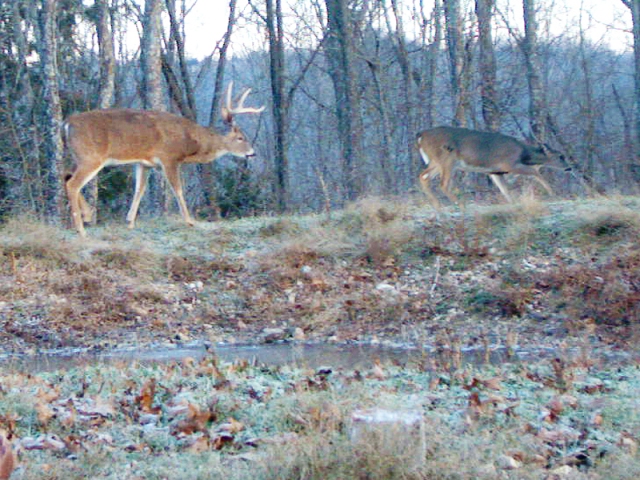When to Harvest Does
Filed under: Deer Hunting, Hunting Blog
Every year at this time I am frequently asked “When is the best time to harvest does?” This is not to be confused with the question “Should I harvest does?” Whether to harvest does or not should be based on the goals of the land owner and the balance of deer numbers and the habitat’s ability to produce/provide quality forage throughout the year. The more of deer’s genetic potential the land owners desire to be expressed the more important it is for each deer to have access to all the quality forage they will consume year round. I suspect that 99.9% of the problems folks perceive to be attributed to genetics with deer can be solved by providing better quality nutrition.
Once the doe harvest quota has been established, the best time to begin harvesting does is the first opportunity presented during legal hunting season!! There are several arguments that are commonly used against this strategy but the most common seems to be “the bucks will leave seeking does elsewhere.”
This is simply not true for the majority of mature bucks. I refer to Queen Isabella I to illustrate this point. Queen Isabella funded Columbus’ mission that resulted in discovering North America. Queen Isabella thought the world was flat. Columbus thought the world was round – that something better was past the area that was in current range.
 Based on tens and tens of thousands of points recorded by GPS collars on mature bucks, bucks share Queen Isabella’s theory that their world is flat and it is very dangerous outside of their known world. They have no idea if there are more or less does outside of their range. They certainly don’t know the wind thermals, threats, predators, hot spots, etc., outside their range. Most mature bucks that have been fitted with GPS collars from Texas to Minnesota to Maryland to Florida spend all or the vast majority of their days within the same home range. Some of these collared bucks have taken excursions and almost always return to their range in 24 or 48 hours. By any measure, mature bucks are homebodies.
Based on tens and tens of thousands of points recorded by GPS collars on mature bucks, bucks share Queen Isabella’s theory that their world is flat and it is very dangerous outside of their known world. They have no idea if there are more or less does outside of their range. They certainly don’t know the wind thermals, threats, predators, hot spots, etc., outside their range. Most mature bucks that have been fitted with GPS collars from Texas to Minnesota to Maryland to Florida spend all or the vast majority of their days within the same home range. Some of these collared bucks have taken excursions and almost always return to their range in 24 or 48 hours. By any measure, mature bucks are homebodies.
Based on all we know about deer and their use of senses and their ability to survive this makes sense. Deer would be extremely vulnerable to predators (2- and 4-legged) without great knowledge of the habitat and wind thermals.
To make bucks more active during the rut within their home range, it is best to reduce the number of does so each mature buck will search more to find a receptive doe. If the adult sex ratio is skewed toward does, a mature buck may spend most of his time “locked down” with a receptive doe and not be cruising/competing for a date.
I’ve experienced the benefits of hunting properties where the adult sex ratio was balanced or even skewed toward bucks. The rut was intense!! Grunting, rattling, and using other vocalizations often results in action when used in herds with a balanced adult sex ratio. I’ve witnessed this throughout the whitetails’ range. You can experience it also – if you begin harvesting does early and work toward your harvest objective. The number of does to harvest will vary from none to many, depending on the habitat’s capacity to produce quality forage and the herd’s current adult sex ratio.
Finally – every year I witness club and land owners adopt the strategy of waiting until after the rut to begin harvesting does. They rarely meet their doe harvest quota and their hunting isn’t as good because those does they passed got a date with a mature buck and caused him to be locked down for a couple of days. Ten extra does could mean 20 days of some mature bucks being locked down.
With that, I’m out the door to hunt. It’s the second day of bow season and I haven’t tagged a doe yet. I need to tag a doe tonight so my hunts during the rut will be exciting this year.
Growing Deer together,
Grant



